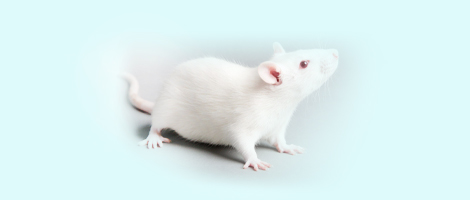| 1 |
LEIDAL A M, LEVINE B, DEBNATH J. Autophagy and the cell biology of age-related disease[J]. Nat Cell Biol, 2018, 20(12):1338-1348. DOI:10.1038/s41556-018-0235-8 .
|
| 2 |
WAGNER J U G, TOMBOR L S, MALACARNE P F, et al. Aging impairs the neurovascular interface in the heart[J]. Science, 2023, 381(6660):897-906. DOI: 10.1126/science.ade4961 .
|
| 3 |
XIE S, XU S C, DENG W, et al. Metabolic landscape in cardiac aging: insights into molecular biology and therapeutic implications[J]. Signal Transduct Target Ther, 2023, 8(1):114. DOI: 10.1038/s41392-023-01378-8 .
|
| 4 |
马丽媛,王增武,樊静,等.«中国心血管健康与疾病报告2022»要点解读[J].中国全科医学, 2023, 26(32):3975-3994. DOI: 10.12114/j.issn.1007-9572.2023.0408 .
|
|
MA L Y, WANG Z W, FAN J,et al. Interpretation of Report on Cardiovascular Health and Diseases in China 2022[J]. Chin Gen Prac, 2023, 26(32):3975-3994. DOI: 10.12114/j.issn.1007-9572.2023.0408 .
|
| 5 |
李雪婵, 韩乐, 王雪文, 等. 啮齿类动物衰老模型研究新进展[J]. 中国实验动物学报, 2023, 31(12):1605-1609. DOI: 10.3969/j.issn.1005-4847.2023.12.011 .
|
|
LI X C, HAN L, WANG X W, et al. Research progress in aging rodent models [J]. Acta Lab Anim Sci Sin, 2023, 31(12): 1605-1609. DOI: 10.3969/j.issn.1005-4847.2023.12.011 .
|
| 6 |
CAI N S, WU Y F, HUANG Y. Induction of accelerated aging in a mouse model[J]. Cells, 2022, 11(9):1418. DOI: 10.3390/cells11091418 .
|
| 7 |
RIEHLE C, BAUERSACHS J. Small animal models of heart failure[J]. Cardiovasc Res, 2019, 115(13):1838-1849. DOI: 10.1093/cvr/cvz161 .
|
| 8 |
PAPAIOANNOU V E, BEHRINGER R R. Obtaining or generating gene mutations in mice[J]. Cold Spring Harb Protoc, 2023. DOI: 10.1101/pdb.over107956 .
|
| 9 |
HERRANZ N, GIL J. Mechanisms and functions of cellular senescence[J]. J Clin Invest, 2018, 128(4):1238-1246. DOI: 10.1172/JCI95148 .
|
| 10 |
CACHEIRO P, SPIELMANN N, MASHHADI H H, et al. Knockout mice are an important tool for human monogenic heart disease studies[J]. Dis Model Mech, 2023, 16(5):dmm049770. DOI: 10.1242/dmm.049770 .
|
| 11 |
LI Y C, GAO J F, GUAN Y L, et al. Novel rhino-like SHJH hr mice with thyroid dysfunction[J]. Zool Res, 2021, 42(6):734-738. DOI: 10.24272/j.issn.2095-8137.2021.211 .
|
| 12 |
GAO J F, LI Y C, GUAN Y L, et al. The accelerated aging skin in rhino-like SHJH hr mice[J]. Exp Dermatol, 2022, 31(10):1597-1606. DOI: 10.1111/exd.14632 .
|
| 13 |
WANG Y, SUN L, KAN T Y, et al. Hypermethylation of Bmp2 and Fgfr2 promoter regions in bone marrow mesenchymal stem cells leads to bone loss in prematurely aged mice[J]. Aging Dis, 2024. DOI: 10.14336/AD.2024.0324 .
|
| 14 |
唐慧青, 常书福, 于志锋, 等. SHJH hr 小鼠部分生物学特性及衰老表型的测定与分析[J]. 实验动物与比较医学, 2023, 43(01):44-52. DOI: 10.12300/j.issn.1674-5817.2022.069 .
|
|
TANG H Q, CHANG S F, YU Z F, et al. Investigation on biological characteristics and aging phenotype of SHJH hr mice[J]. Lab Anim Comp Med, 2023, 43(1): 44-52. DOI: 10.12300/j.issn. 1674-5817.2022.069 .
|
| 15 |
MITCHELL S J, SCHEIBYE-KNUDSEN M, LONGO D L, et al. Animal models of aging research: implications for human aging and age-related diseases[J]. Annu Rev Anim Biosci, 2015, 3(1):283-303. DOI: 10.1146/annurev-animal-022114-110829 .
|
| 16 |
XIE K, EHNINGER D. Ageing-associated phenotypes in mice[J]. Mech Ageing Dev, 2023, 214:111852. DOI: 10.1016/j.mad.2023.111852 .
|
| 17 |
Tabula Muris Consortium. A single-cell transcriptomic atlas characterizes ageing tissues in the mouse[J]. Nature, 2020, 583(7817):590-595. DOI: 10.1038/s41586-020-2496-1 .
|
| 18 |
NOLL N A, LAL H, DAVID MERRYMAN W. Mouse models of heart failure with preserved or reduced ejection fraction[J]. Am J Pathol, 2020, 190(8):1596-1608. DOI: 10.1016/j.ajpath.2020.04.006 .
|
| 19 |
PAGAN L U, GOMES M J, GATTO M, et al. The role of oxidative stress in the aging heart[J]. Antioxidants (Basel), 2022; 11(2):336. DOI: 10.3390/antiox11020336 .
|
| 20 |
Aging Biomarker Consortium, BAO H, CAO J, et al. Biomarkers of aging[J]. Sci China Life Sci, 2023, 66(5):893-1066. DOI: 10.1007/s11427-023-2305-0 .
|
| 21 |
CAI Y S, SONG W, LI J M, et al. The landscape of aging[J]. Sci China Life Sci, 2022, 65(12):2354-2454. DOI: 10.1007/s11427-022-2161-3 .
|







 ), 程灏1, 尚付生2, 常书福1(
), 程灏1, 尚付生2, 常书福1( )(
)( ), 徐平3
), 徐平3
 ), CHENG Hao1, SHANG Fusheng2, CHANG Shufu1(
), CHENG Hao1, SHANG Fusheng2, CHANG Shufu1( )(
)( ), XU Ping3
), XU Ping3